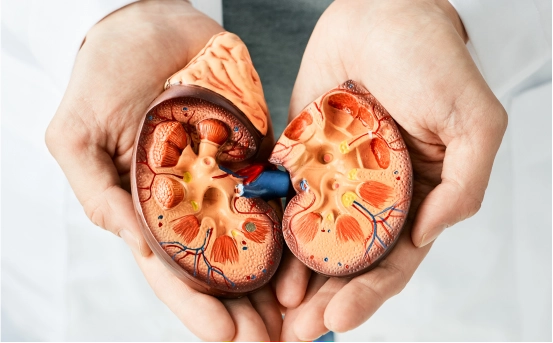Kidney stones removal are a common urological condition that affects millions of people across the world. These hard, crystalline mineral formations develop in the kidneys and can cause severe pain, discomfort, and urinary issues. When these stones become too large to pass naturally through the urinary tract, kidney stone removal becomes necessary.
With advancements in urology, there are now multiple effective and minimally invasive methods available to remove kidney stones and relieve patient discomfort. From shock wave therapy to laser assisted procedures, doctors choose the right approach based on the size, location, and type of kidney stone. The goal is always to ensure safe and complete removal while minimizing downtime and preventing future recurrences.
What Is Kidney Stone Removal?
Before delving into removal methods, it’s important to understand what kidney stones are and how they form. Kidney stones, or renal calculi, are solid masses made up of crystals. They typically form from substances like calcium, oxalate, and uric acid, which can accumulate in the urine. If these substances are not adequately diluted, they can crystallize and grow into stones over time.
Small kidney stones often pass on their own with minimal discomfort. However, larger stones can become lodged in the urinary tract, leading to severe pain (renal colic), nausea, vomiting, and blood in the urine.
When Is Kidney Stone Removal Necessary?
Kidney stone removal is recommended when
-
The stone is too large to pass naturally
-
The stone is causing intense and persistent pain
-
There is an obstruction in the urinary tract
-
The stone is associated with infection
-
Kidney function is at risk
If left untreated, large or obstructive stones can lead to complications such as urinary tract infections, kidney damage, and even permanent renal impairment. That’s why timely medical intervention is crucial.
Diagnosis Before Removal
Before proceeding with kidney stone removal, doctors typically perform diagnostic tests to determine the size, location, and composition of the stone. Common diagnostic methods include
-
Ultrasound :- A non-invasive imaging technique that helps locate stones in the kidneys or urinary tract.
-
CT Scan :- A highly accurate imaging method that provides a clear picture of the stone’s size and exact position.
-
Urine and Blood Tests :- These help assess kidney function and detect any infections or imbalances.
Based on the diagnostic findings, the urologist will suggest the most suitable treatment option.
Kidney Stone Removal Methods
There are several treatment options available for removing kidney stones. The method chosen depends on factors such as the size and location of the stone, the severity of symptoms, and the patient’s overall health. Below are the most common kidney stone removal techniques
-
Extracorporeal Shock Wave Lithotripsy (ESWL) :- ESWL is one of the most widely used non-invasive treatments for kidney stones. It uses shock waves to break large stones into smaller fragments, which can then pass naturally through the urine.
This procedure is performed on an outpatient basis and typically takes about 45 to 60 minutes. Recovery is quick, and patients can usually resume normal activities within a day or two.
-
Ureteroscopy (URS) :- Ureteroscopy is a minimally invasive technique used for stones located in the ureter or lower kidney. A thin, flexible scope is inserted through the urethra and bladder to reach the stone. Once located, the stone is either removed using a small basket or broken into smaller pieces using a laser.
URS is often performed under general anesthesia and has a relatively short recovery time.
-
Percutaneous Nephrolithotomy (PCNL) :- For larger or more complex kidney stones, especially those greater than 2 cm, percutaneous nephrolithotomy is recommended. This surgical procedure involves making a small incision in the back to access the kidney directly. A nephroscope is then used to remove the stone or break it apart with ultrasound or laser energy.
PCNL is more invasive than ESWL or URS but is highly effective for large or multiple stones. It may require a hospital stay of one to two days.
- Open or Laparoscopic Surgery :- Open surgery for kidney stone removal is rarely performed today due to advances in minimally invasive techniques. However, in rare cases where other methods fail or if there are anatomical abnormalities, open or laparoscopic surgery may be necessary. These procedures involve direct access to the kidney through an incision, allowing complete removal of the stone.
Recovery and Post Procedure Care
Recovery after kidney stone removal depends on the method used. Minimally invasive procedures like ESWL and URS typically allow for a quick return to normal activities. PCNL and open surgery may require a longer recovery period and close medical supervision.
Regardless of the procedure, patients are usually advised to
-
Drink plenty of water to flush out stone fragments
-
Follow prescribed medications to manage pain and prevent infection
-
Avoid strenuous activities for a few days
-
Monitor for signs of infection or complications
Regular follow up appointments are essential to ensure proper healing and to evaluate for any recurrence of stones.
Preventing Kidney Stones in the Future
After successful kidney stone removal, preventing recurrence is key. Your doctor may recommend dietary changes and lifestyle modifications based on the type of stone. Common prevention strategies include
-
Increasing fluid intake to dilute urine
-
Reducing salt and animal protein consumption
-
Avoiding foods high in oxalate like spinach, beets, and nuts
-
Maintaining a healthy weight
-
Taking prescribed medications if needed to control urine chemistry
Periodic imaging and urine tests may also be advised to monitor kidney health and ensure no new stones are forming.
When to See a Doctor?
If you experience any of the following symptoms, it is important to consult a doctor promptly
-
Severe, sharp pain in the side or back
-
Blood in urine
-
Frequent or painful urination
-
Fever or chills with urinary symptoms
-
Nausea and vomiting accompanying flank pain
Early diagnosis and appropriate treatment can prevent complications and reduce the need for surgical intervention.
Conclusion
Kidney stone removal is a common and effective medical procedure that helps patients find relief from pain and prevents serious complications. With advancements in technology, most stones can now be treated using minimally invasive methods that offer quick recovery and lasting results.























